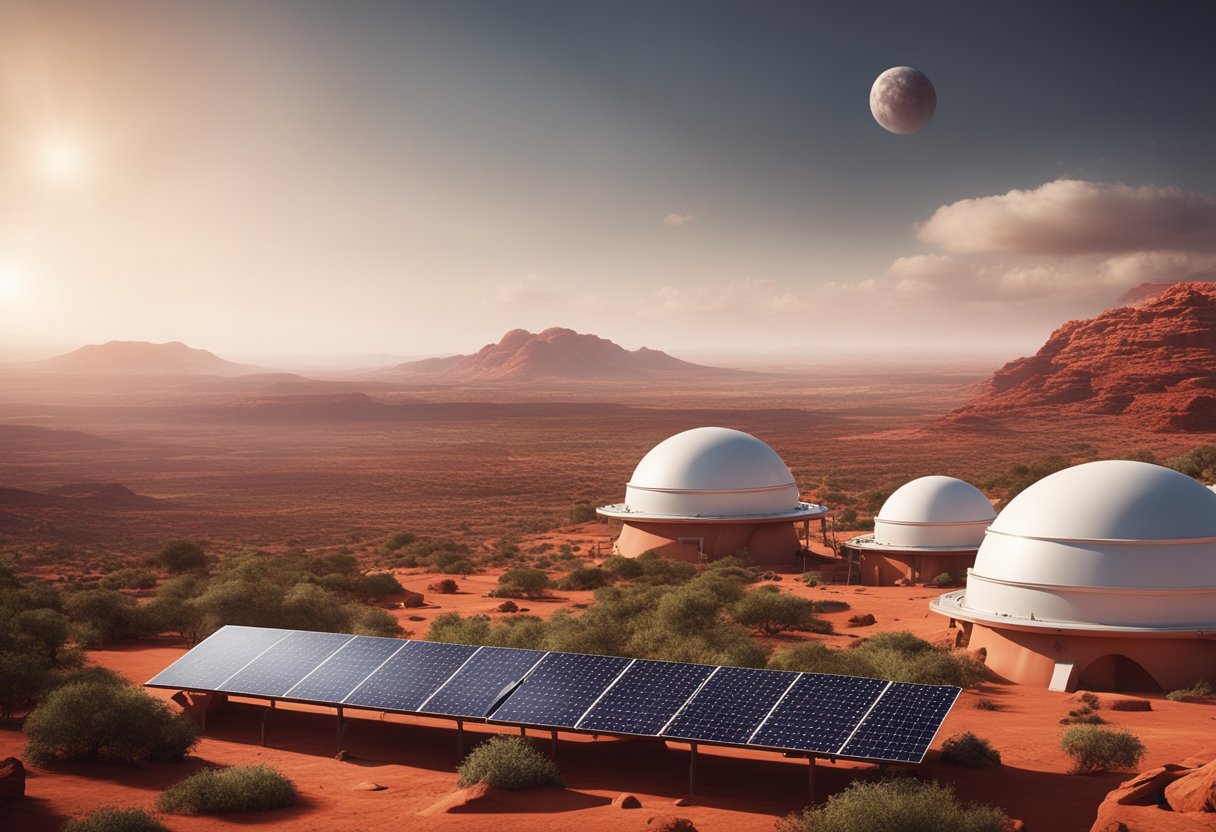
Martian Habitats – The allure of Mars has captivated us for generations, beckoning as a frontier for human exploration and potential habitation. Our enduring fascination with the Red Planet is propelling a new era of space travel, in which the conceptualisation of Martian habitats plays a pivotal role. These designs not only encapsulate our dreams of space exploration but are concrete steps towards making human colonisation of extraterrestrial worlds a reality.
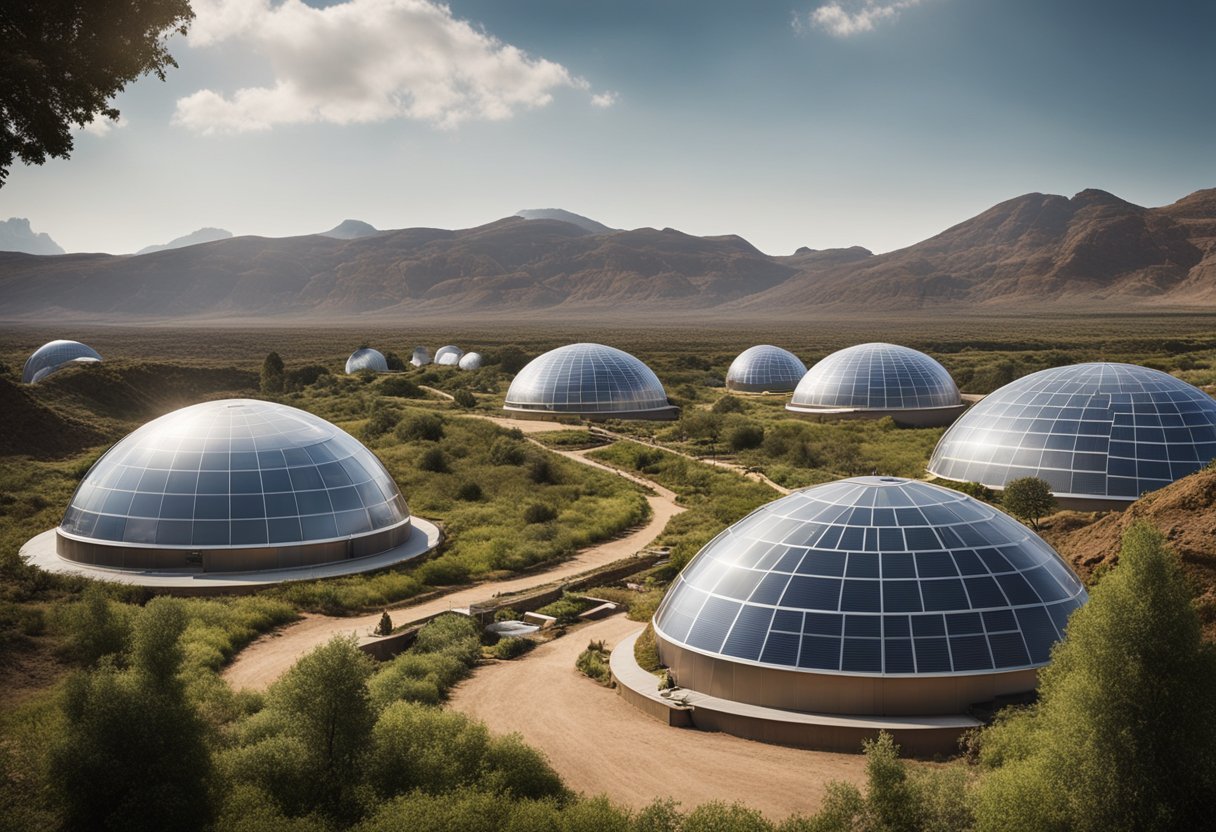
In envisioning homes on Mars, we must address the challenges posed by its harsh environment. This necessitates innovative solutions that intertwine engineering prowess with an understanding of human needs in space. From 3D printing habitats using Martian regolith to creating self-sustaining ecosystems, every proposed design reflects our determination to overcome obstacles and thrive on another planet. As we continue to push the boundaries of technology and design, the goal of constructing resilient and habitable structures on Mars moves from the realm of science fiction into plausible future scenarios.
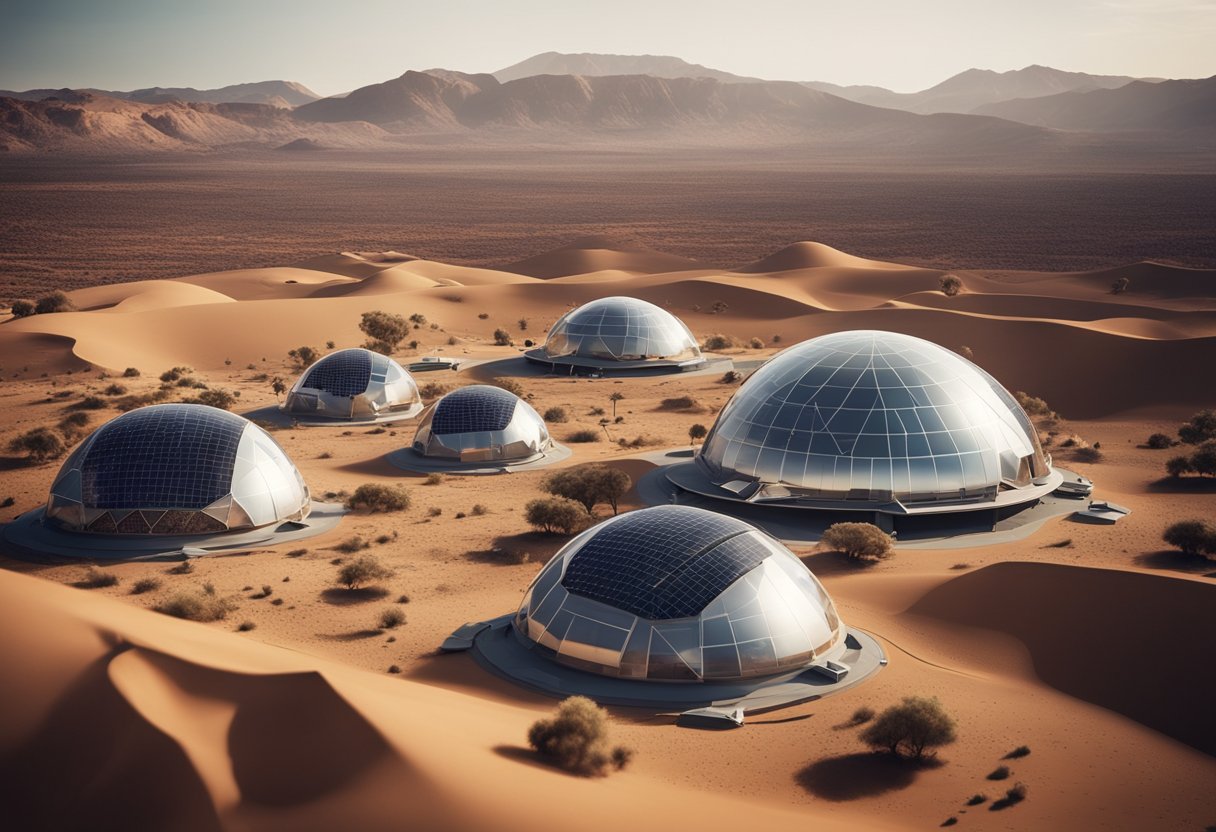
The chapter that unfolds offers a glimpse into humanity’s ambitious leap from our terrestrial cradle towards the crimson-hued landscapes of Mars, and the potential that burgeons for our species as we eye this next monumental stride in colonisation.
In traversing the gulf between Earth and Mars, we have witnessed colossal strides by agencies like NASA and visionaries such as Elon Musk of SpaceX. The journey began with robotic scouts paving the way for human footsteps. NASA’s perseverance and successive missions have unravelled the Martian secrets, building a foundation for the later colonisation efforts. SpaceX, with its Starship, envisages not merely visits, but a sustainable human presence on the Red Planet.
Apart from these titans, projects such as Mars One aimed to establish a permanent human colony on Mars, although the feasibility of such initiatives remains a topic of intense discussion. The challenges of Martian settlement are numerous – from creating habitats capable of withstanding harsh radiation and cold temperatures – yet the potential for establishing a new branch of human civilisation drives our collective efforts.
While Mars One has waned, SpaceX continues its bold quest, spurred on by Elon Musk‘s vision of multiplanetary existence. The tantalizing prospect of a self-sufficient colony on Mars could redefine our species’ trajectory. Concurrently, initiatives like SpaceVoyageVentures.com keep the public engaged with the prospect of space tourism, hinting at a not-so-distant era when trips to Mars may join the pantheon of human adventures.
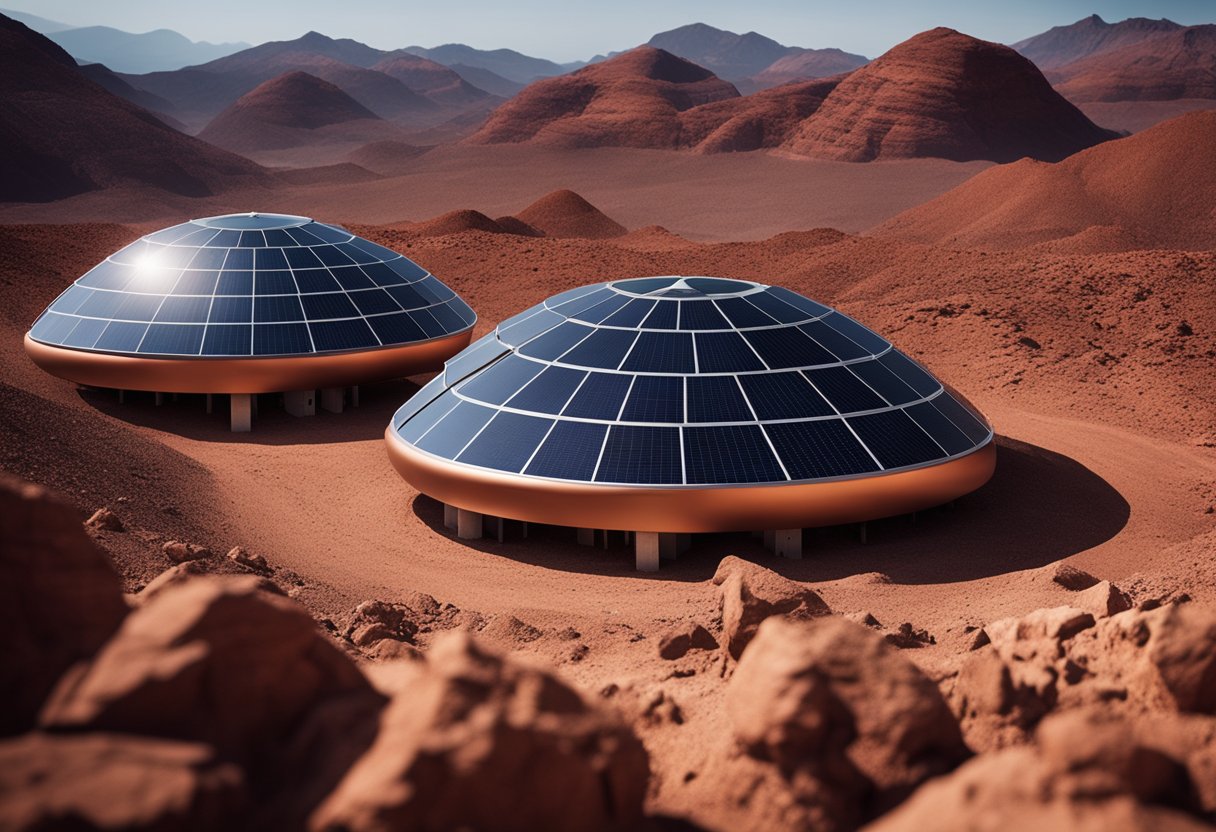
Before we start constructing habitats on Mars, we must closely examine the Martian environment, which presents several challenges due to its temperature and climate, terrain and soil composition, and hostile atmosphere. Our knowledge in these areas is pivotal for designing sustainable living spaces for future astronauts.
Mars experiences considerable temperature fluctuations that significantly impact habitat design. Averaging about -60 degrees Celsius, temperatures can soar to a relatively mild 20 degrees Celsius at the equator during the daytime but plummet to a chilling -125 degrees Celsius at the poles during the night. Given Mars’s thin atmosphere, thermal insulation becomes essential to protect inhabitants from extreme temperatures.
The surface of Mars, covered with regolith, presents a diverse landscape, including vast plains, volcanoes, and valleys. Martian soil is composed of basaltic rock and dust particles with a fine texture, similar to lunar dust. Its sharp, abrasive nature is a concern for both equipment and habitat integrity. Utilising in-situ resources to construct habitats that can withstand this harsh terrain will be of utmost importance.
Mars’s atmosphere is over 95% carbon dioxide, with only trace amounts of oxygen, posing an extreme environment for humans. Protection against the thin, almost vacuum-like atmosphere—including low air pressure—is crucial. Additionally, Mars has no magnetic field, resulting in intense solar radiation exposure, complicating human colonisation efforts. Innovation in building materials and techniques that counteract this radiation is critical.
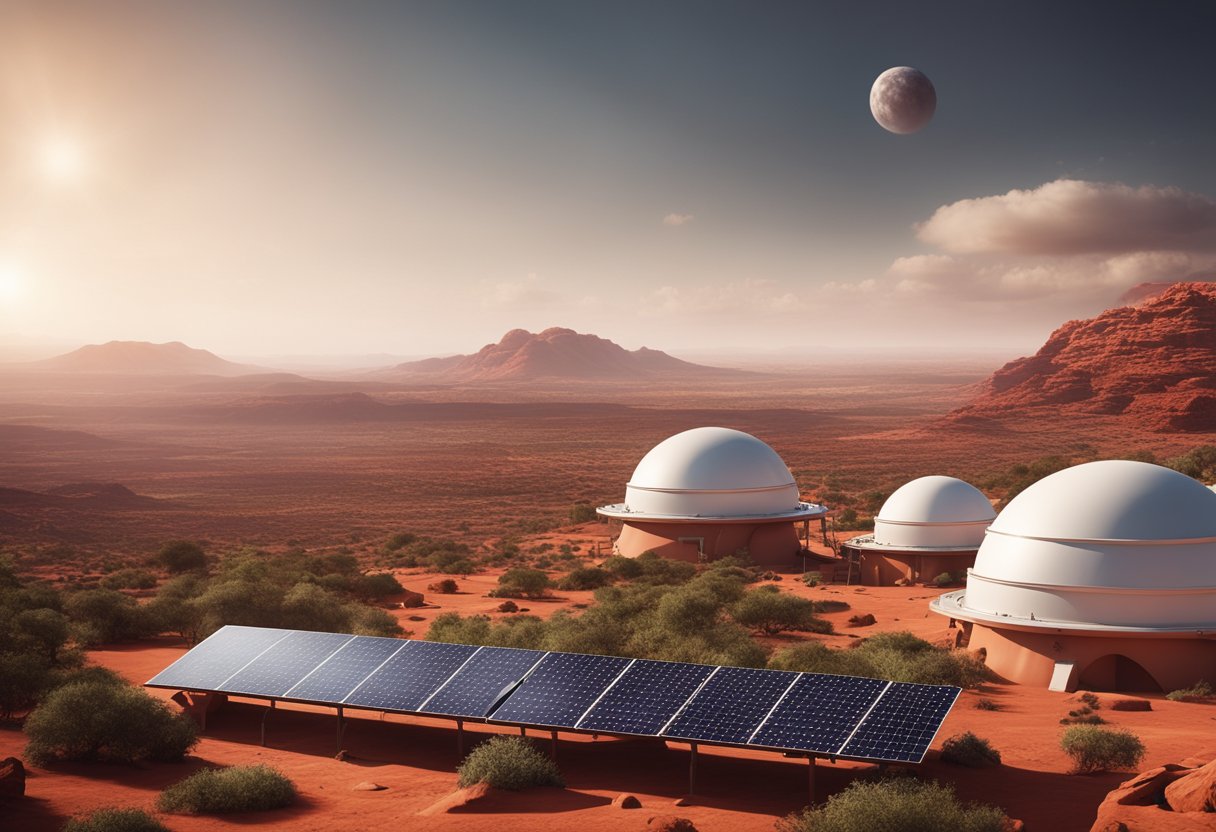
When considering the conceptual designs for Martian habitats, we must focus on several critical factors including structural integrity, appropriate material selection, and the imperative of sustainability. Our aim is to integrate these principles with the challenging environment of Mars.
The structural design of Martian habitats is paramount as it must withstand Mars’ extreme temperature fluctuations and potential geologic activity. Considering the thin atmosphere, habitats must also be pressurised and resistant to radiation. We see innovative use of 3D printing technology integrating local materials such as regolith to create sturdy structures directly on Mars, reducing the need for materials from Earth. An exemplar is the Design Variants of a Common Habitat for Moon and Mars Exploration, where the concept reflects a dual-purpose functionality for lunar and Martian conditions.
The selection of building materials in crafting Martian habitats is a blend of ingenuity and practicality. Indigenous materials, primarily regolith, have shown great potential when used alongside advanced building materials innovated on Earth. Utilising in-situ resources minimises the mass and cost of interplanetary transportation. It is in our interest to advance the use of 3D printing technology to synthesise robust habitat components from the Martian soil itself, as highlighted in the Conceptual Design of Mars Underground Habitation System.
Mars habitats should promote sustainability and aim for complete self-sufficiency to reduce reliance on resupply from Earth. We integrate renewable energy systems, such as solar panels, with efficient life-support systems. The development of Martian greenhouses is essential to achieve a closed-loop ecosystem, providing food and oxygen while also treating waste. Incorporating advanced technologies and sustainable practices ensures not only the survival but also the quality of life for Mars inhabitants. A notable concept is the NASA’s Advanced Exploration Systems Mars Transit which seeks architectural solutions to improve habitat life support systems.
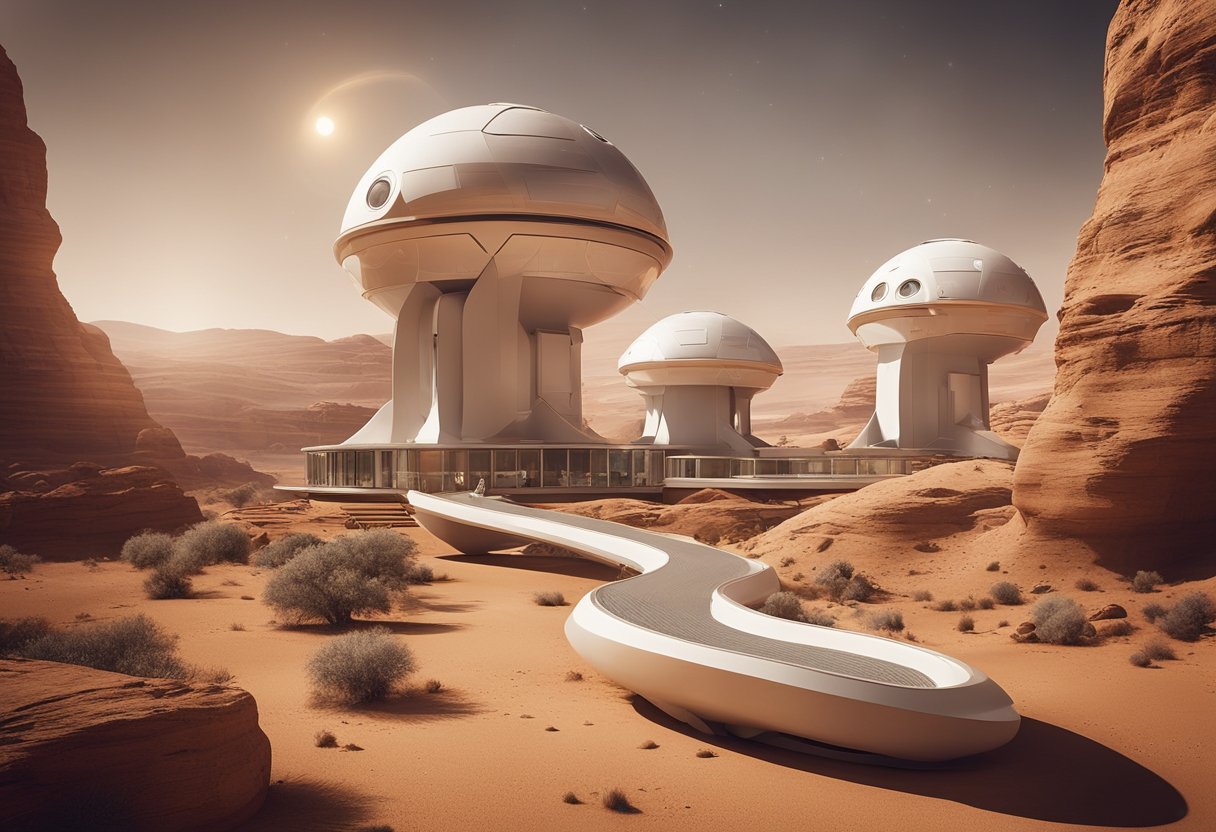
As we move closer to the reality of Martian colonisation, we’ve witnessed significant progress in the technologies critical for building sustainable habitats. These advancements not only make the concept more feasible but also address unique challenges posed by the Martian environment.
3D printing technology has evolved to facilitate the construction of habitats on Mars using in-situ resources. We use regolith, the Martian soil, as a primary building material, reducing the need for transport from Earth. Pioneering this approach, projects like the AI SpaceFactory have developed prototypes using materials that mimic Martian conditions. The scalability of this technology ensures that large structures can be printed, paving the way for future expansion.
Robotics and artificial intelligence (AI) are the backbones of our automated construction processes on Mars. We deploy semi-autonomous robots, programmed to perform tasks with minimal human oversight. These robots carry out the building operations using materials such as regolith, ensuring efficient resource usage. Our implementations are designed to withstand the drastic atmospheric pressure differences and maintain structural integrity within a Martian setting.
Life support systems stand at the forefront of sustaining human life on Mars. These systems are responsible for crucial functions, such as generating oxygen from the carbon dioxide-rich Martian atmosphere and regulating habitat pressure to Earth-normal levels. Innovations in this field are geared towards maximising reliability and energy efficiency.
Our developments in technology and innovation don’t just bring us one step closer to Martian habitats but also expand the realms of possibility for life beyond Earth. As we advance, it’s not just about survival but creating a new home for humanity. Discoveries made here could lead to broader applications, such as in the realm of space tourism, possibly making living on multiple planets a reality for future generations.
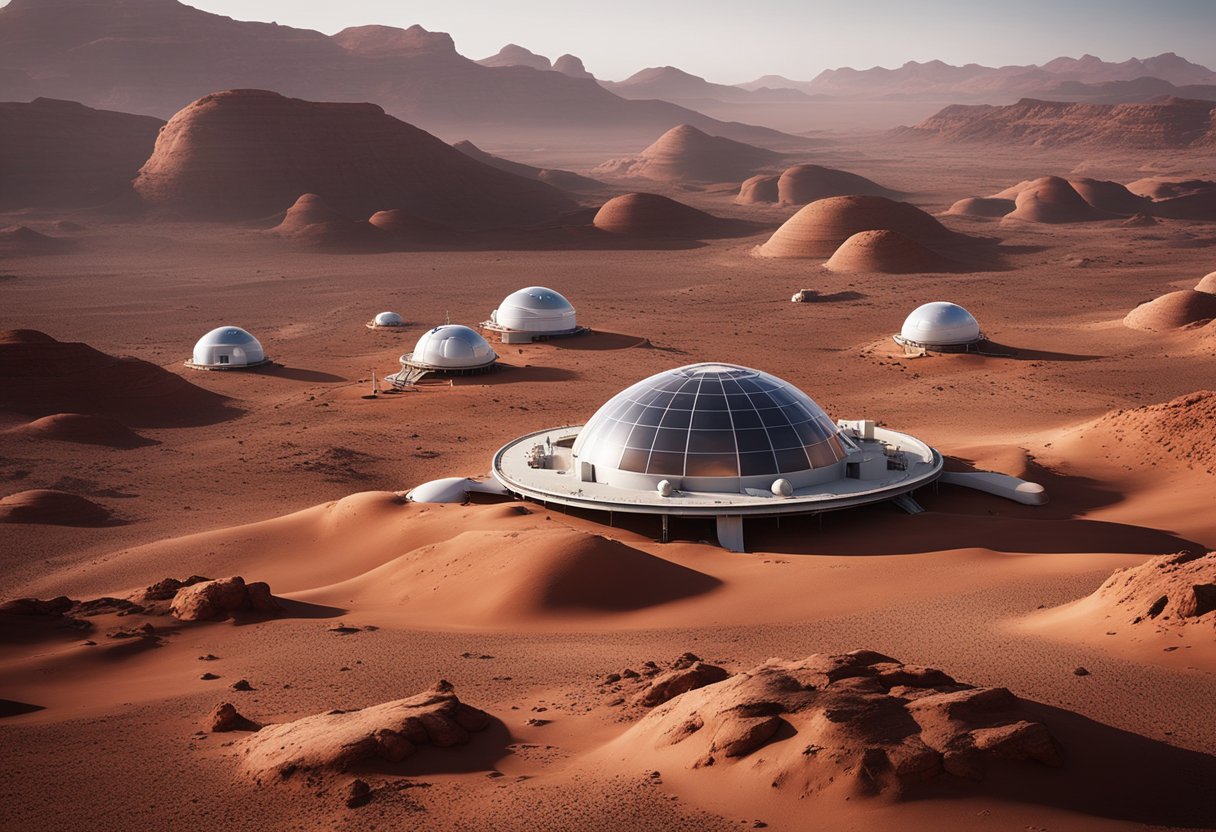
When designing Martian habitats, we face numerous engineering challenges. These include protecting inhabitants from harsh Martian conditions such as extreme radiation and temperature fluctuations, as well as setting up life-support systems that provide a stable pressurised environment and adequate water and oxygen supplies.
Mars offers little natural protection from cosmic radiation and solar flares. Our designs integrate advanced radiation shielding using local materials, such as regolith, which serve as an effective barrier. For instance, habitats are often planned with thick-walled structures or covered with Martian soil to absorb harmful rays. These habitats must also withstand the extreme cold of Martian nights. We employ innovative insulation techniques and temperature control systems that take advantage of solar energy or nuclear power to maintain a stable internal temperature.
To counter the thin Martian atmosphere, which is just 1% as dense as Earth’s, creating a pressurised environment within the habitat is paramount. We’re exploring rigid and inflatable habitat designs that can withstand the pressure differential. Seals and airlocks must be flawless to prevent air leakage, implementing multi-layered redundancy systems to ensure the safety of the occupants. Our habitat designs utilise robust materials that expand and contract minimally in response to temperature changes to maintain structural integrity.
Our survival on Mars depends on a reliable supply of water and oxygen. Ingenious methods are being developed to extract water from the Martian soil or ice deposits at the poles. We refine these systems to minimise power consumption and maximise efficiency. The extracted water not only serves as drinking water but is also electrolysed to produce oxygen for breathing. We have designed recycling systems to reclaim as much water from the habitat as possible, including moisture from exhaled air and evaporation.
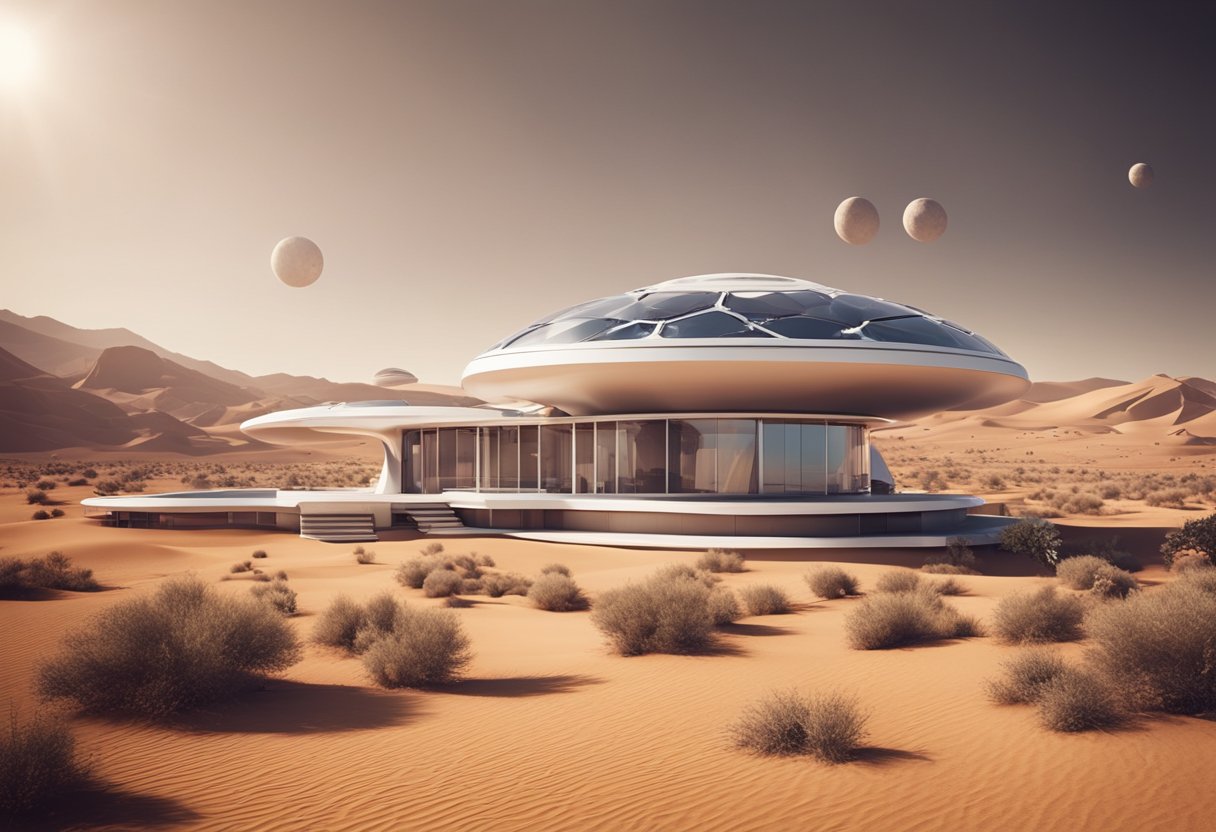
In the quest to inhabit Mars, we’ve seen remarkable architectural solutions emerge from design competitions. These contests catalyse innovation and encourage architects to push the boundaries of what is possible.
NASA initiated the 3D Printed Habitat Challenge to foster the development of sustainable shelters suitable for the Martian environment. Utilising resources native to Mars, finalists conjured up designs that maximised efficiency and resilience. The competition’s aim was to not only source viable blueprints but also to spur public interest and discourse on space habitation.
Our careful observation of the contest revealed the critical importance of utilising in-situ materials to overcome logistical challenges. Key insights from the competition demonstrate that extensive reliance on Martian resources is not just conceivable but imperative for sustainable colony development.
Beyond NASA’s contests, we also recognise the contributions from international competitions, such as the Martian Hub – Mars Housing Colony Design Challenge. These global platforms invite architects and visionaries to conceive habitats that could become humanity’s home on Mars. Finalists from various cultural and professional backgrounds brought a plethora of designs that addressed the harsh Martian climate and terrain.
Interestingly, the concepts from these competitions also align with early visions outlined on SpaceVoyageVentures.com, encouraging not only functional habitats but also considering the aspects of space tourism. It is through these architectural feats that we imagine not just survival, but life thriving on Mars. The ambition demonstrated by these competitions’ participants is leading us closer to turning Martian habitation from a distant dream into a tangible reality.
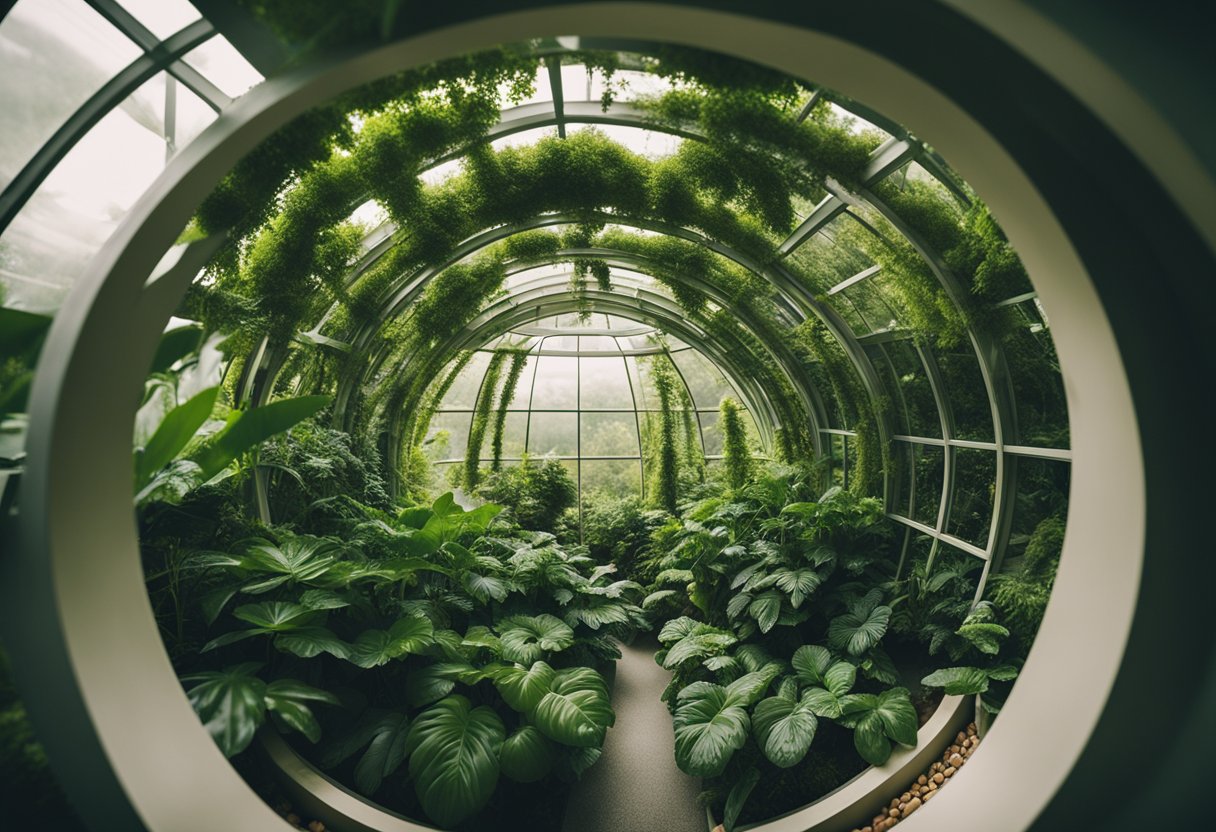
In designing Martian habitats, we must rigorously consider the biological and psychological needs of future residents. Factors like the long duration of space missions, limited social interaction, and the need for a liveable environment all have significant implications for the wellbeing of humans who will live and work on Mars.
When we think about the human body and its requirements, the design of Martian habitats must accommodate a variety of needs, including those that support biological health. Ensuring the right mix of oxygen and maintaining adequate atmospheric pressure are critical for preventing medical issues such as hypoxia or decompression sickness. On Earth, our homes are more than just shelter; they’re places that support all aspects of our health, from the psychological—allowing for privacy and personal space—to the biological—providing clean air and a comfortable climate. Similarly, Martian habitats must be engineered to support human life, taking into account the effects of Mars’s lower gravity on the human body.
Isolation poses a serious challenge to mental health on long space missions. Limited contact with Earth, a lack of natural sunlight, and confined living quarters can lead to issues such as depression or a phenomenon known in space psychology as “cabin fever.” To alleviate these concerns, habitats could mimic natural Earth conditions, such as by using lighting systems that replicate the natural diurnal patterns, and providing communal areas that permit private and social interactions, thus nurturing the human element even in the expanse of space.
Creating a liveable habitat on Mars goes beyond ensuring that humans can simply survive. We must create environments where they can thrive, both physically and mentally. The design must incorporate a reliable life support system to manage waste, provide food, and maintain air and water quality. Ergonomics plays a vital role, as furniture and equipment need to be designed for comfort and protection against the Martian environment. Our understanding of the Martian environment, gathered from bioinspired concepts for Martian habitats, informs the development of sustainable and comfortable living spaces that cater to the nuanced demands of human biology and psychology.
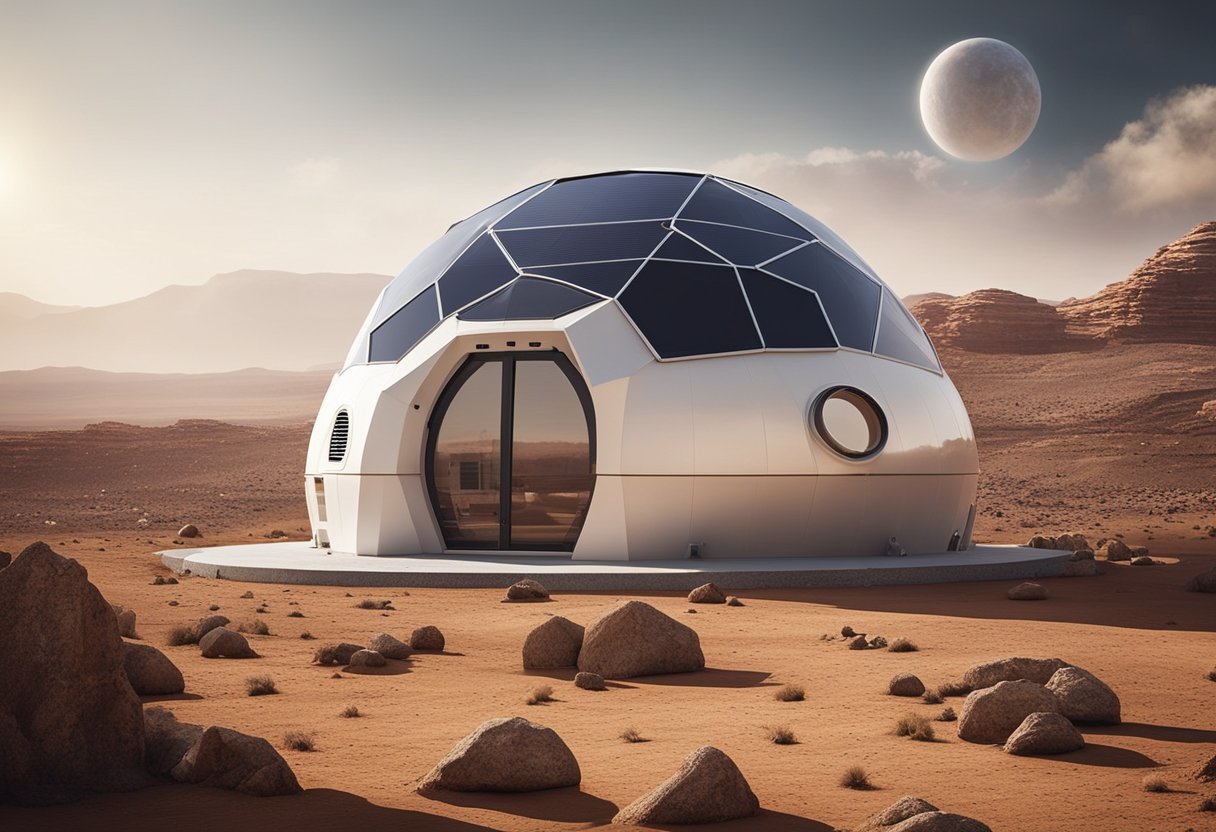
As we explore the potential of human habitation on Mars, the reality of constructing stable and secure habitats is paramount. We must utilise materials that are either found on or are compatible with the Martian environment and leverage building techniques that account for the planet’s unique challenges.
In considering local resources, Martian regolith presents itself as a foundational building material. Comprising mostly basalt and containing necessary oxides, regolith can be processed into geopolymer concrete. Thorough research suggests that geopolymer concrete might be a prime candidate for habitat construction, offering definitive structural benefits when considering Mars’ conditions, such as temperature variance and different geological characteristics.
The adaptation of 3D printing technology for Martian applications is another breakthrough; this technique can be employed to create structures from regolith directly. By reinforcing with local materials like Martian sand and basalt fibers, a biopolymer matrix could be utilised for its high compressive and tensile strength. These materials not only contribute to the durability of Martian habitats but also provide good insulation, crucial for coping with the planet’s extreme temperature fluctuations.
3D printing emerges again as a central technique in the actual construction process. By printing with regolith-based feedstock, building habitats layer by layer, we can minimise the requirements for transporting materials from Earth, thus conserving energy. This method also allows for creating intricate, customisable structures, optimised for Martian weather and pressure conditions.
Additionally, incorporating local ice as a building material can serve multiple functions: structural integrity, radiation shielding, and potentially even water storage. The utilization of ice, in conjunction with regolith, may significantly improve the thermal performance of habitats, protecting future residents from the harsh climatic extremes of Mars.
Our understanding and application of these materials and techniques continue to evolve as we aim to establish the first human colonies on the Red Planet, integrating sustainability with innovation for extraterrestrial architecture.
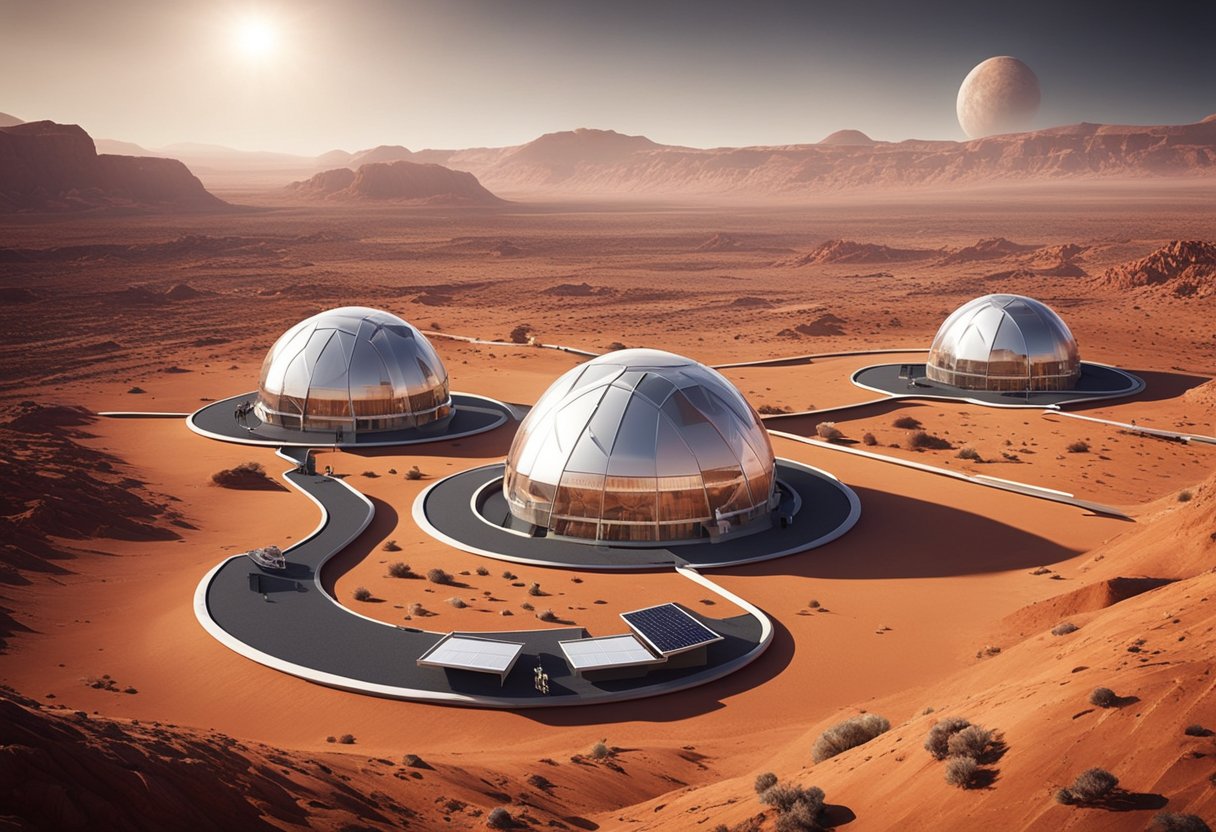
As we explore the burgeoning field of Martian habitat design, it’s vital to consider both the most promising concepts and the engineering challenges they must overcome. Design teams worldwide have grappled with a myriad of considerations from functional requirements to ensuring structural integrity in the harsh Martian environment.
The MARSHA design, conceived by Space Exploration Architecture and AI SpaceFactory, presents a vertical habitat using materials native to Mars. It emerges from the idea that such structures need to be both functional and adaptive to Martian conditions. The structural integrity of the MARSHA design focuses on withstanding Mars’ atmospheric pressures and protecting inhabitants from cosmic and solar radiation.
ICE HOUSE, co-developed by teams at Clouds AO and SEArch+, embodies an innovative approach to Martian habitats using ice as a primary building material. The design leverages the fact that ice is a shield against radiation and can be translucent, creating a livable space that is both safe and psychologically beneficial for astronauts due to the natural light it offers. Detailed explorations of these designs are available through research on their thermal performance and material requirements.
Space agencies, including NASA, collaborate with academic institutions and architectural firms to push the boundaries of Martian habitat design. Northwestern University has been pivotal in researching how habitats can be built leveraging in-situ resources, ensuring long-term sustainability on Mars. Agencies aim for habitats with robust structural designs that can support human life, such as the conceptual designs from Kahn-Yates and ZA Architects, which feature unique approaches to living on the Red Planet. The Mars Surface Habitat Concept Design from NASA’s Technical Reports Server showcases just one avenue they’re exploring.
SpaceVoyageVentures.com documents these and other visionary steps toward off-world colonisation that could one day intersect with space tourism. The careful balance of innovative design thinking and rigorous scientific research moves us closer to our goal of establishing human presence on Mars.
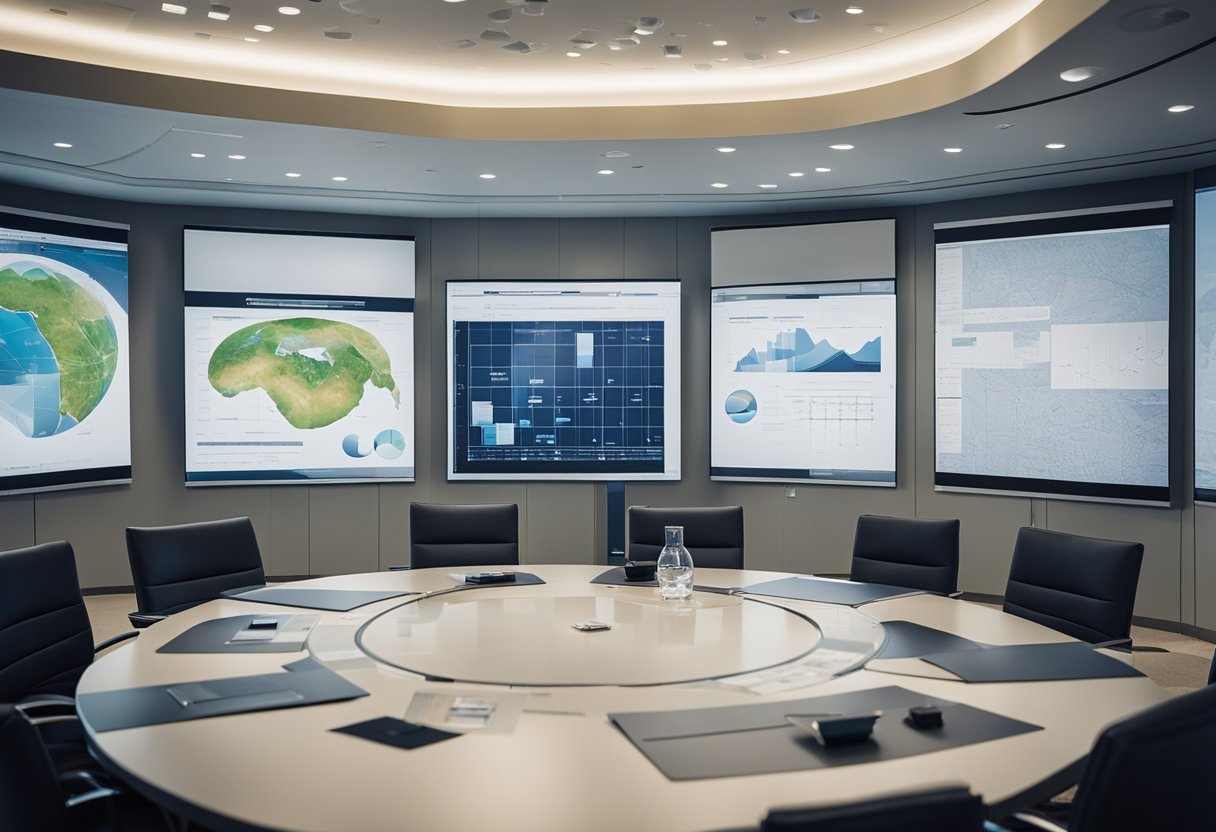
In planning habitats on Mars, we must address the challenges of transportation and on-site construction as well as ensure plans for long-term maintenance and upholding the growth potential of the colony.
Transporting the necessary materials to Mars requires spacecraft capable of enduring the harsh environment of space and the surface of Mars. The assembly process involves not just aligning structures but also integrating systems for life support and scientific operations. Lava tubes offer a natural shield against cosmic and solar radiation, making them strong candidates for the placement of initial habitation modules. However, their utilisation will need careful mapping and assessment beforehand. Our logistics plans must also include contingency for mining Mars’s natural resources, vital for the colony’s self-sufficiency.
The sustainability of a Martian colony rests on our ability to perform regular maintenance and support its expansion over time. This involves establishing operations for in situ resource utilisation (ISRU), such as mining for water ice and regolith for construction. The design of habitats must be modular to allow for straightforward scalability. As our presence on Mars grows, we’ll look to leverage caverns as part of the colony layout, planning to expand our footprint in a way that supports the broader Mars exploration objectives. It’s essential that we approach this with an adaptive frame of mind, ready to evolve our strategies with technological advancements and new discoveries.
Our work at SpaceVoyageVentures.com keeps us at the forefront, considering the role of early space tourism and its impact on Mars’s operational prospects.

Throughout the ongoing endeavour to establish a presence on Mars, we’re witnessing a convergence of expertise unlike any before. NASA has been at the forefront, fostering partnerships that span across continents and sectors. With projects such as the Artemis programme, which aims to return humans to the Moon as a preliminary step towards Mars, international collaboration is not just beneficial but essential.
SpaceX, led by CEO Elon Musk, has taken a pivotal role in the race to the Red Planet, not only by developing the Starship, a spacecraft designed for long-duration spaceflights, but also by stirring public interest. This private company’s ambitions complement NASA’s, with both working towards the shared goal of Mars colonisation.
The involvement of AI SpaceFactory stands as a testament to the innovative approaches being integrated into habitat design. This company gained recognition after winning NASA’s 3D-Printed Habitat Challenge, and their designs reflect a synergy of architectural ingenuity and sustainability.
International Partnerships further enrich the Martian mission tapestry. Collaboration between entities such as the European Space Agency (ESA), the Canadian Space Agency (CSA), and space agencies from Japan, India, and the UAE, bring diverse perspectives and technologies to bear. Through these partnerships, we aim to ensure that Martian habitats are resilient, habitable, and efficient.
As we continue planning missions to Mars, it’s critical for us to stay connected with platforms that document our progress towards space tourism. One such platform, SpaceVoyageVentures.com, serves as a repository of information regarding the evolution from exploration to potential future space tourism endeavours.
Our focus remains steadfast on these collaborative efforts, recognising that the challenge of Mars colonisation cannot be tackled by any single entity alone. It is through the collective ingenuity and the shared vision of all involved that we will pave the way for human footprints on Martian soil.
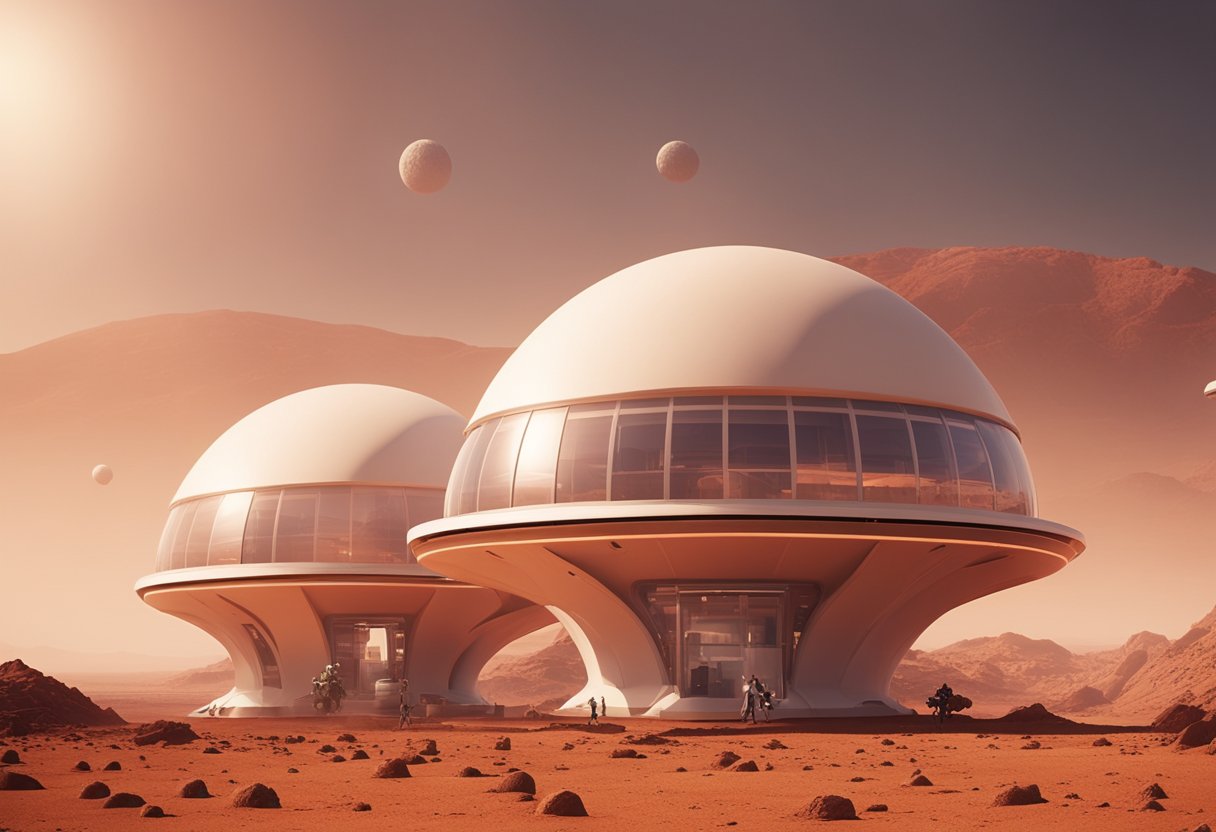
As we explore the idea of establishing human presence on Mars, several considerations come to the fore regarding habitat design and survival technology.
For an off-Earth habitat to be feasible, it must balance functionality with the well-being of its occupants. The design must be human-centric, meaning sufficient living space, access to basic needs, and perhaps even amenities that promote mental health.
The extreme conditions of Mars, such as low atmospheric pressure, cold temperatures, and lack of breathable air, necessitate habitats that are insulated, pressurised, and equipped with life support systems. Architectural designs must be resilient against these harsh conditions.
Researchers are investigating the performance-driven design methodology that includes using Martian soil to build sturdy structures. 3D printing technology using in-situ resources could pave the way for construction on Mars.
Our understanding of sustainable habitat technology revolves around creating self-sufficient systems that can support life. This includes developing Advanced Life Support Systems, renewable energy sources, and inflatable habitable structures.
Martian structures could be insulated against temperature extremes and shielded from harmful radiation through the use of regolith-based materials. Additionally, some proposals suggest building habitats underground to naturally shield from radiation.
Ensuring a constant supply of air, water, and food in a closed system remains a major challenge. The equipment must operate flawlessly in the Martian environment for extended periods, necessitating robust and failure-proof systems.